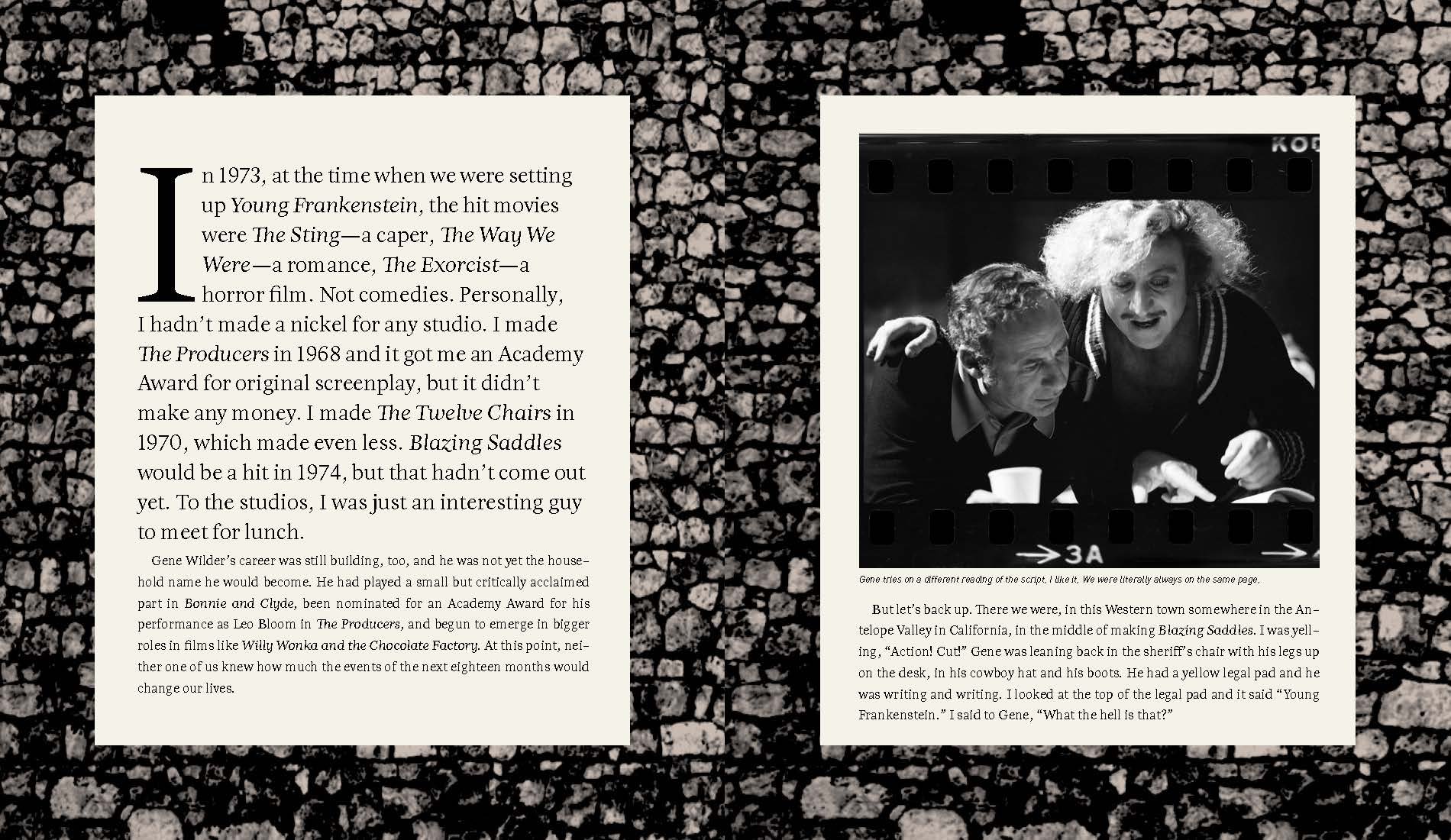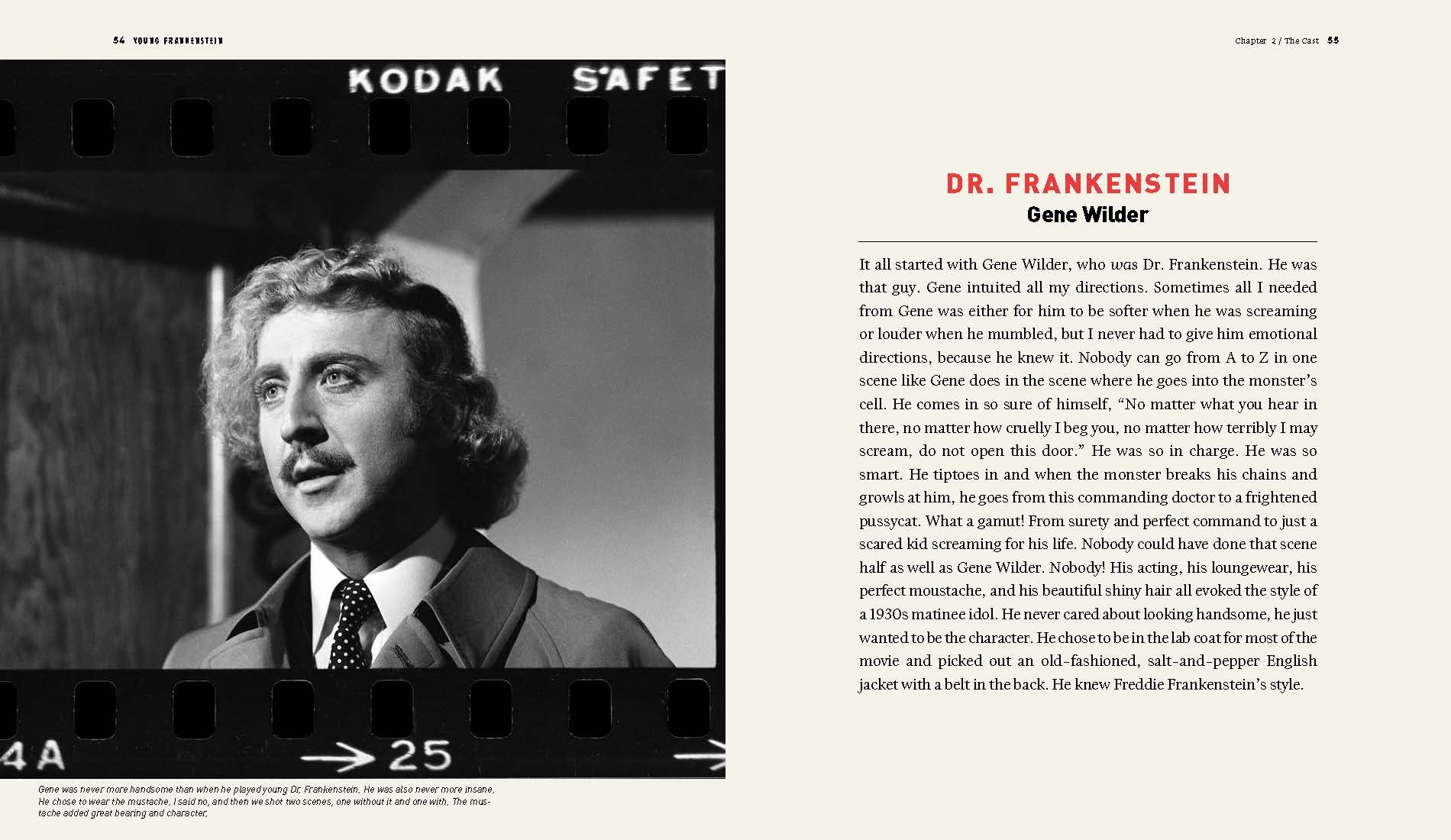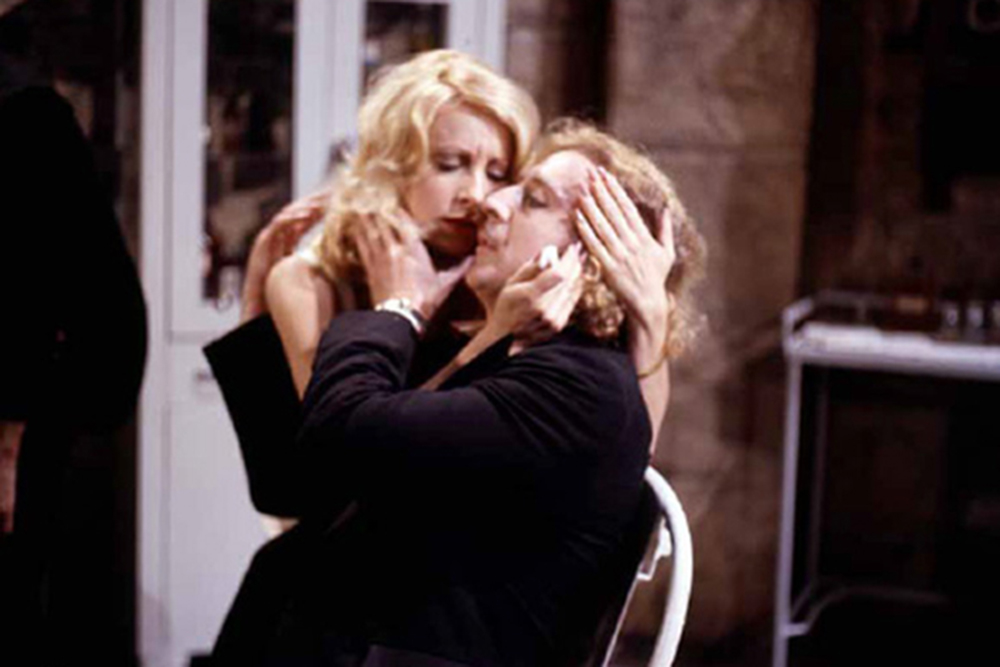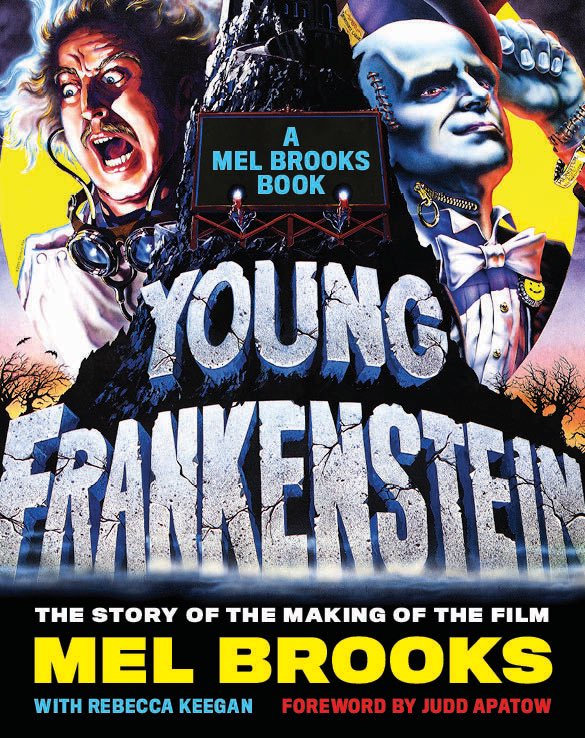Film
WHEN I WAS ASKED to review Young Frankenstein: The Story of the Making of the Film, I was suspicious. This magazine of podcast links and sloppy noodling has recently been shooting its mouth off about opening a bookstore, and I have no intention of being a sign-spinning flack for a small business concocted by dreamers. It’s not an issue of integrity—I shed illusions about my integrity long ago—so much as being a flack involves hustle, and the idea of hustle annoys me.
I was also told, though, that if I accepted this assignment, I would get a free copy of the book.
YOUNG FRANKENSTEIN: THE STORY OF THE MAKING OF THE FILM wobbles a bit out of the gate—there is language directed toward the reader that explains how the book will “work” that seems to signal a lack of confidence in the book’s design. (It is carefully explained that contributors other than Mel Brooks will appear under different headings and in different fonts, even though this is obvious to the eye and to anyone who has read more than a few books in their life.) Though that may be a complaint about the sense of a wavering editorial hand, there are other aspects of the book that have benefited from the editorial conceit. Online “oral histories” have no particular column-inch or design limit beyond a word count or reading time an editor decides on or, in many cases, appears not to decide on. The result is the Grantland-style oral history of some old basketball game, an article that just seems to go on forever, well beyond the point of anything that would hold even the interest of serious fans. Young Frankenstein: The Story of the Making of the Film, however, is smartly paced. It moves democratically through the film’s original cast members and key members of the crew, including cinematographer Gerald Hirschfeld, one of the film’s unsung heroes. There are significant voices missing, of course, since many of the cast members are no longer alive, but archival interviews are used smartly, photos do good work, and Brooks’ memories fill other gaps. We get a few thoughts from Teri Garr, some anecdotes from Brooks, three or four hundred words from Alan Ladd, Jr. about producing the film, a similar amount of attention to John Alvin’s poster design…the book zips merrily along.
As you may know, Young Frankenstein (the movie) is funny. But though some of the film’s jokes are discussed in the book, the stills and set photos are not particularly comedic. This is the ingenious disconnect of the film—what your eyes see in Young Frankenstein is the luminous silver gothic, while what your ears report is the smooth absurdity only the very talented and supremely inspired can concoct when pointed in the direction of whimsy. Brooks has certainly earned his reputation for being a broad comedian, but broad comedy seems a useful guise behind which he has been free to operate unburdened by tonier expectations. The delightful cognitive dissonance of Young Frankenstein is similar to the dissonance the Coen brothers uncork on a regular basis. It may seem ridiculous to describe the Coen’s as “like Mel Brooks,” but moviegoers who dislike the Coens—there actually are some—tend to be folks put off by the Coens’ desire to mix moods and modes until we want simultaneously to laugh, cry, and avert our eyes.


Brooks didn’t pull this movie off alone, though: it was Gene Wilder’s idea to make a Frankenstein movie with a silly premise executed with great earnestness. He wrote up a treatment between shots on Blazing Saddles before presenting the idea to Brooks, who at first blanched. It’s no accident that Young Frankenstein is Brooks’ high point and also the last time he worked with Wilder—there’s a creative chemistry between the two that Wilder described as resulting from counterbalanced goals:
[Mel] gives me the most insane things to do and I carry them out realistically...My job was to make him more subtle. His job was to make me more broad. I would say, "I don't want this to be Blazing Frankenstein," and he'd answer, "I don't want an art film that only fourteen people see."
The key element of the chemistry in Young Frankenstein that sets the film apart from everything else Brooks has done, though, is the women. Every woman in Young Frankenstein is super-talented and totally locked in. Madeline Kahn is a dream. That she is Dr. Frankenstein’s fiancée is strangely believable, because she radiates the same forced grandeur as Wilder’s character—one can easily sense them meeting on the same delusional plane. Cloris Leachman, already a veteran of another tricky movie that, like Young Frankenstein, qualifies as science-fiction (Kiss Me Deadly), never lets on that the severity of her Frau Blucher performance is a wild joke. And also, let me be very clear about one of the other cast members:
Teri Garr is a national treasure.
Here’s Garr’s analysis of the role she would eventually win:
When I read the part, I realized it was really all about boobs, and I was not about to let my lack of them hinder my performance. The next day I went in to do my imitation of Renata for Mel Brooks wearing a fuzzy pink sweater and a huge padded bra stuffed with socks. . . . I got the part!
I repeat: Teri Garr is a national treasure.
“If you are successful, the original ends up appearing to be a somewhat wobbly version of the satire—a reversal of chronology.”
A book, of course, is not a movie. Young Frankenstein is a masterpiece, while Young Frankenstein: The Story of the Making of the Film is candy. It’s lovely candy, though—the on-set color photos are fascinating (Peter Boyle sat through hours of green makeup application despite the fact the film was shot in black and white), the discussions of aesthetic decisions interesting in their frankness and practicality. The filmmakers’ on-set argument about the cinematography reveals that rather than conceiving of satire as doing a cartoonish version of the original, Brooks and Wilder conceived of their movie as needing to be like James Whale’s original Frankenstein movies, but more so. The logical extension of deciding your satire will be more like the original than the original is that, if you are successful, the original ends up appearing to be a somewhat wobbly version of the satire—a reversal of chronology. It is not unusual for young people to see Young Frankenstein before they ever see any of the James Whale Frankenstein movies, in which case the chronological reversal is a lived reality. I saw Whale’s Frankenstein when I was very young—it scared me badly—and saw Young Frankenstein later. And yet at this point in time, if someone says “Frankenstein movie,” the image that appears in my head is of Gene Wilder and Peter Boyle. (And then I start to think about Teri Garr and how she is a national treasure.)
Frankenstein has become inexorably linked with Halloween, which I am sure explains the book’s October release. I can watch Young Frankenstein anytime of year, though—it’s lovely in any weather. The iconic Young Frankenstein poster that has been used for the book’s cover suggests something wacky, and while it’s true that this is not Jean-Luc Godard on film’s role in society or Pauline Kael getting into the nitty gritty of the American film industry, the discussions of film aesthetics in Young Frankenstein: The Story of the Making of the Film are revealing. Even if the book is a piece of candy, it’s a many-layered one I’m happy to have.
Pete Tothero is a staff writer at the magazine. He recently wrote about film-geek-friendly Star Wars spinoffs in trouble.

